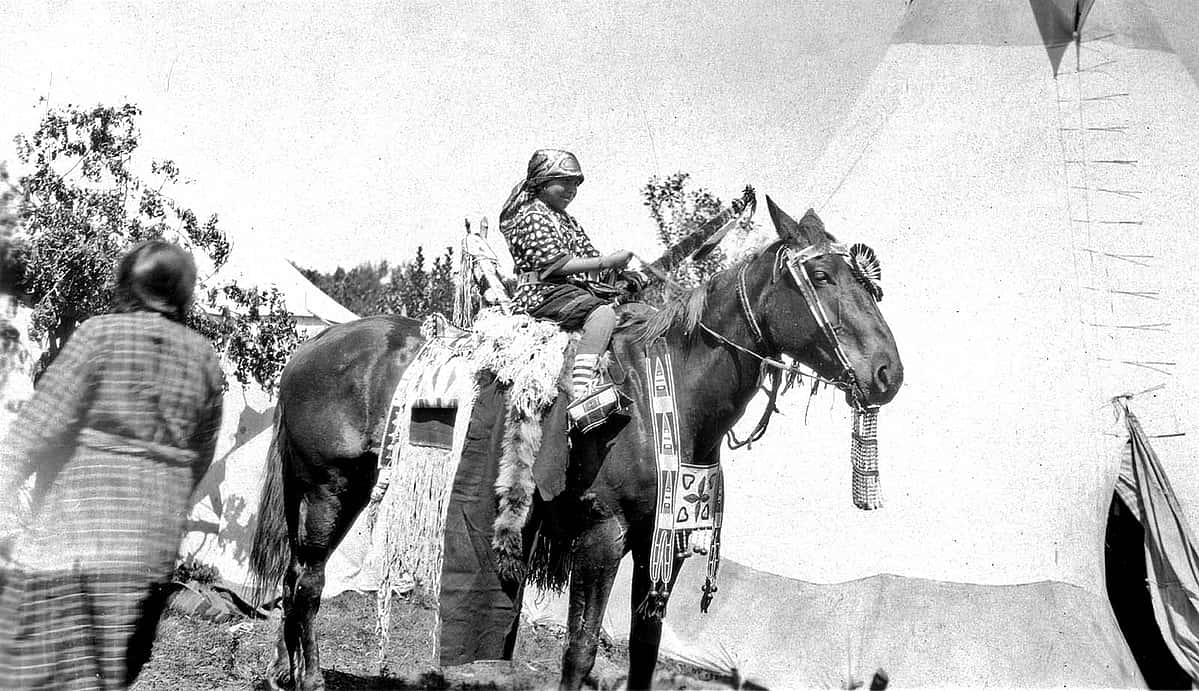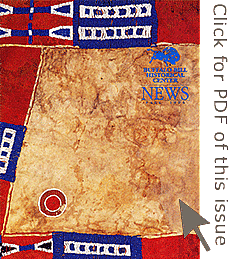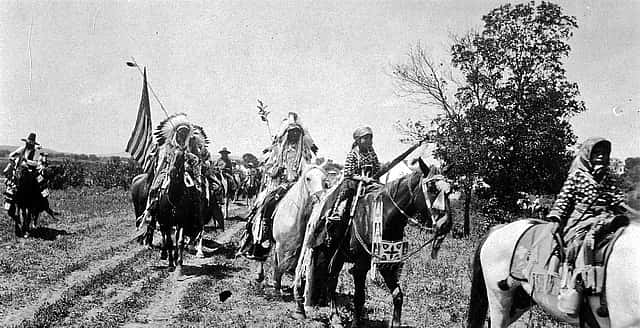
Riders of the Northern Plains and Plateau Regions – Points West Online
Originally published in Points West magazine
Fall 1994
Riders of the Northern Plains and Plateau Regions
By Emma I. Hansen
Curator Emerita, Plains Indian Museum
The introduction of the horse in the southwest had effects on the ways of life of the Apache and Comanche people of that region. During the 1700s as people of the northern plains and plateau acquired horses through raiding and trade, their lives also were dramatically transformed. For Native people of the plains who had followed and hunted bison on foot packing their belongings on their dogs, the horse made possible an elaboration and flowering of their economies and cultures. For other groups such as the Cheyenne, Arapaho, and Sioux the arrival of the horse presented new economic possibilities as they traveled from their homelands into the plains to take up lives as nomadic buffalo hunters.
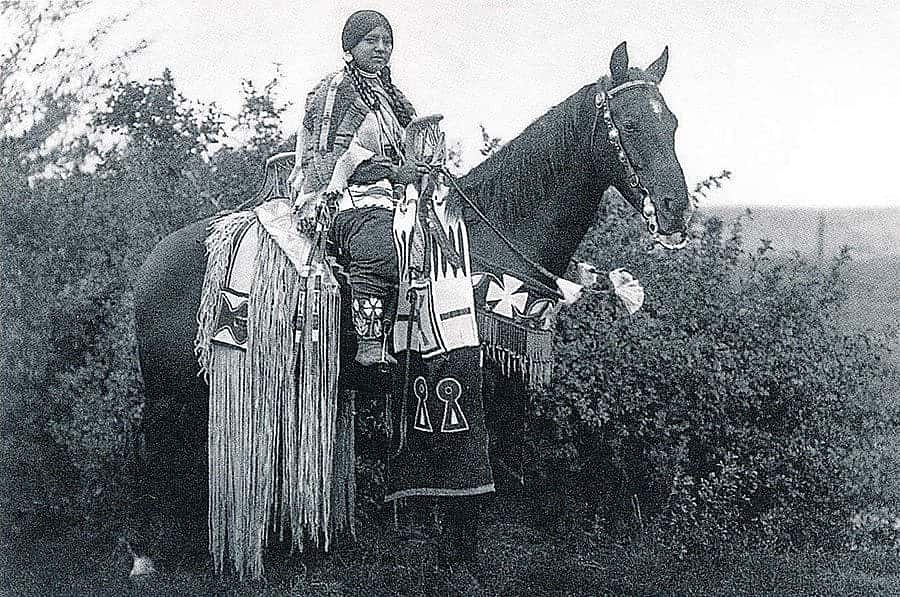
Besides the immediate economic advantages of being able to hunt more efficiently, travel greater distances, and transport larger lodges and more belongings, among Indian people of the plains and plateau horses acquired greater symbolic meanings. Owning large numbers of horses signified a warrior’s abilities and his wealth. Two Leggings of the Crow described one successful horse raid against a Sioux camp:
“We had captured over a hundred head; the night was still early, and we had a good chance to get away. It would bring me greater honor to lead them safely back without having killed a man, and I did not want to spoil this. I felt that my medicine had kept the Sioux’s attention off their horses… As I rode I thought of the celebration waiting for us and of the praise I would receive for being leader. I pictured the older men leading me through camp, singing songs about me and calling out my name. I was so happy I sang my medicine song: ‘Anywhere I go, I think of you.’ The bunch of horses running before us looked so fine I could not help myself and sang my song again.”[1]
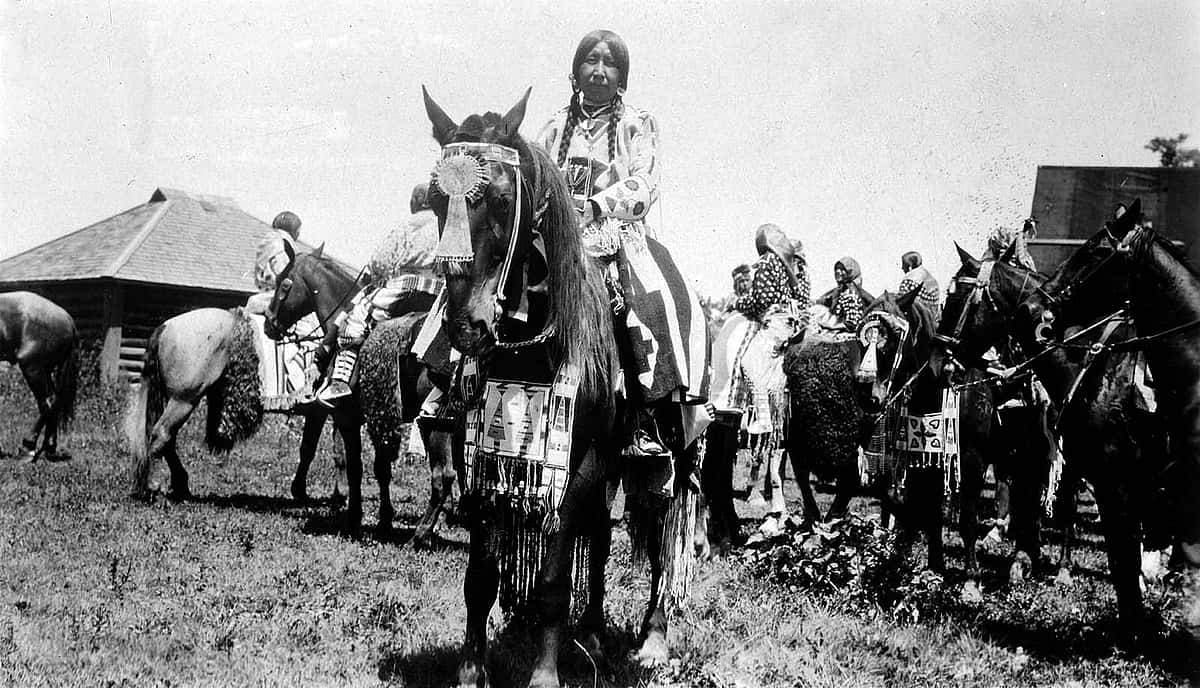
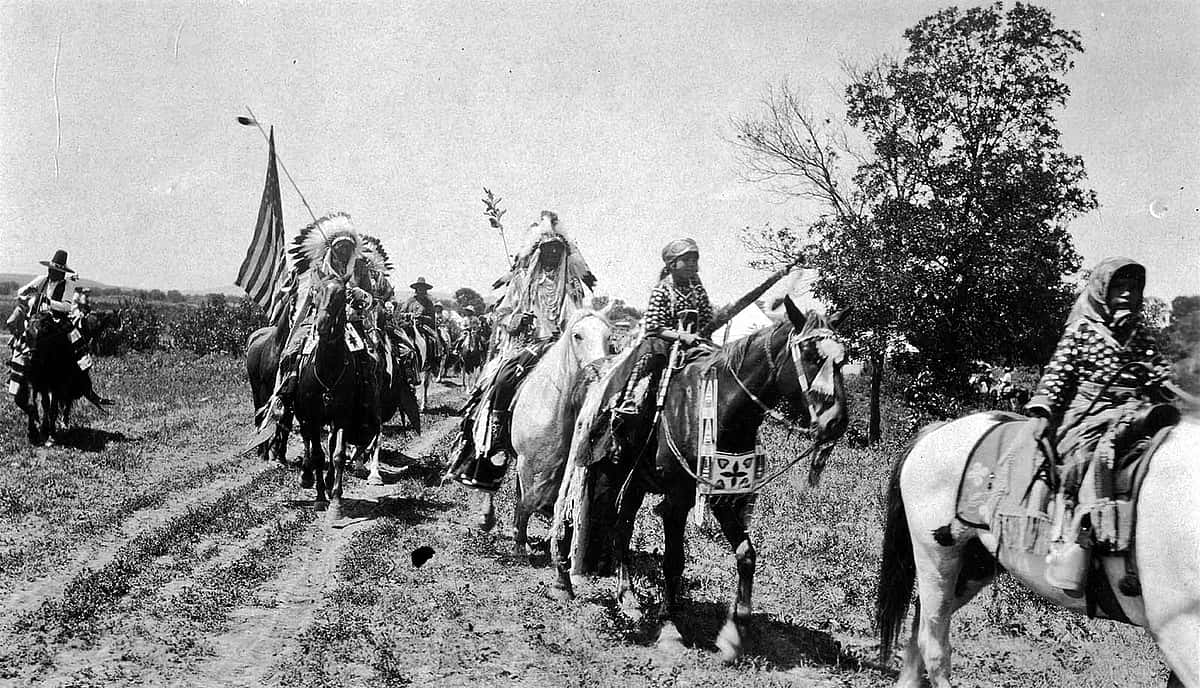
For a woman, horses not only provided transportation for herself and her family, but also new opportunities for aesthetic expression. By the mid-1800s, the Crow, Sioux, Cheyenne, Nez Perce, and Blackfoot were producing distinctive decorated saddles, bridles, blankets, cruppers, and other horsegear. Major types of horse equipment, including the pad saddle, woman’s frame saddle, stirrups, and cruppers, were adapted from Spanish and other European models, and decorated with distinctive painting, bead or quillwork, fringe, brass tacks, trade cloth, or metal bells and tinklers. Saddle blankets and bags, chest decorations, and masks also were elaborated during this period into the turn of the century.
Among many Indian people, the importance of horses in contemporary lives survives in such activities as ranching, rodeo competition, racing, breeding, and recreation. In recognition of past traditions, women continue to produce elaborate horse equipment and decorations to be used in parades and celebrations such as the annual Crow Fair and Calgary Stampede.
Post 090
Written By
Nancy McClure
Nancy now does Grants & Foundations Relations for the Center of the West's Development Department, but was formerly the Content Producer for the Center's Public Relations Department, where her work included writing and updating website content, publicizing events, copy editing, working with images, and producing the e-newsletter Western Wire. Her current job is seeking and applying for funding from government grants and private foundations. In her spare time, Nancy enjoys photography, reading, flower gardening, and playing the flute.
